A cost-benefit analysis of roofing materials is a valuable tool for businesses and homeowners alike. By analyzing the costs and benefits associated with different roofing options, you can make informed decisions that provide the best value for money. In this article, we will explore the process of cost-benefit analysis and how it can help in comparing roofing materials in terms of cost effectiveness.
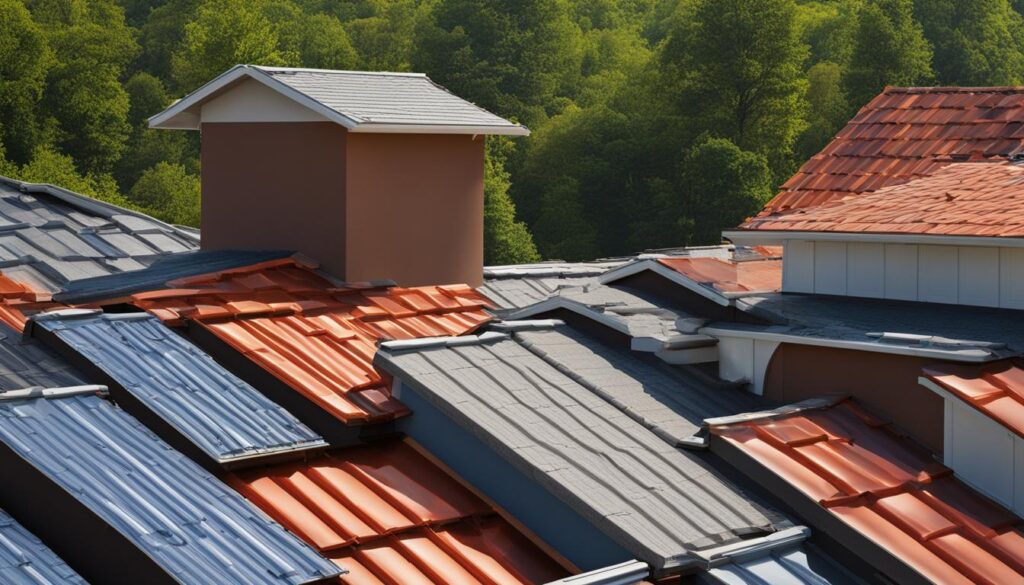
Key Takeaways:
- A cost-benefit analysis helps in assessing the financial feasibility of roofing projects.
- Factors such as revenue earned, costs saved, and intangible benefits and costs are considered in the analysis.
- High-quality roofing materials may initially have a higher cost but can lead to long-term savings due to reduced maintenance and repair expenses.
- Calling a professional for roof repairs and conducting regular inspections can prevent minor issues from becoming major problems.
- It is important to strike a balance between upfront costs and long-term savings when choosing roofing materials.
Understanding Cost-Benefit Analysis
Before embarking on any new project, it is crucial to have a clear understanding of the cost-benefit analysis process. This analytical approach allows businesses to evaluate the potential costs and revenues associated with a particular project, enabling them to make informed decisions. Through a systematic examination of the project’s purpose, timeline, and required resources, businesses can identify the scope of the project and assess its overall feasibility.
The cost-benefit analysis process involves identifying and quantifying various costs that may be incurred, such as direct costs, indirect costs, intangible costs, opportunity costs, and potential risks. These costs are then compared to the potential benefits of the project, which may include tangible benefits like increased revenue and intangible benefits like improved employee safety and customer satisfaction. Calculations are performed to determine the net benefits of the project and make recommendations on whether to proceed.
To illustrate the cost-benefit analysis process, consider the following example:
“A manufacturing company is considering implementing a new automated system in its production line. The cost-benefit analysis involves identifying and quantifying the costs associated with purchasing and installing the system, as well as any ongoing maintenance costs. The potential benefits include increased production efficiency, reduced labor costs, and improved product quality. By comparing the costs to the potential benefits, the company can determine whether the investment in the automated system is financially viable.”
Identifying Project Scope
One of the key tasks in the cost-benefit analysis process is to identify the project scope. This involves determining the boundaries and objectives of the project, as well as understanding the resources required to achieve those objectives. By clearly defining the project scope, businesses can accurately assess the costs and benefits associated with the project and make informed decisions based on the expected outcomes.
In conclusion, understanding the cost-benefit analysis process is essential for evaluating the financial feasibility of projects. By considering the costs and benefits associated with a particular project, businesses can make informed decisions and maximize their return on investment. Identifying the project scope is a crucial step in this process, as it allows businesses to accurately assess the potential costs and benefits. Conducting a thorough cost-benefit analysis helps businesses ensure that their resources are allocated effectively and that projects align with their strategic goals.
The Cost Factor: Budgeting for Roof Repairs
When it comes to roof repairs, understanding the cost factors involved is essential for effective budgeting. The extent of damage and the type of materials needed are key considerations that can significantly impact the overall cost. Minor repairs, such as replacing a few shingles or fixing small leaks, tend to be more affordable compared to extensive damage caused by severe weather or neglect. Therefore, it’s important to assess the level of damage before estimating the repair costs.
In addition to the extent of damage, the choice of roofing materials also plays a significant role in determining the overall cost. Higher-end materials may come with a higher price tag, but they often offer increased durability and longevity, reducing the need for frequent repairs and replacements. On the other hand, opting for cheaper materials initially may result in higher maintenance and repair costs in the long run.
Preventive maintenance is another crucial aspect that can help manage roof repair costs. Regular inspections and routine maintenance can help identify issues at an early stage, preventing them from escalating into more extensive and costly problems. By addressing minor repairs promptly, property owners can extend the lifespan of their roofs and avoid costly emergency repairs.
| Pros | Cons | |
|---|---|---|
| Minor Repairs | More affordable | Limited scope |
| Extensive Damage | Potential for long-term savings through high-quality repairs | Higher upfront costs |
| Choice of Materials | Increased durability and longevity | Potentially higher upfront costs |
| Preventive Maintenance | Identify issues early and prevent costly repairs | Requires regular inspections and maintenance |
By carefully considering the extent of damage, the type of materials needed, and the importance of preventive maintenance, property owners can effectively budget for their roof repairs. It is recommended to consult with professionals, who can provide accurate assessments and recommendations tailored to the specific needs of the roof and property.
DIY Roof Repairs: Pros and Cons
When it comes to roof repairs, many homeowners consider taking the DIY route in an effort to save money. However, it’s important to weigh the pros and cons before embarking on a DIY roof repair project. One of the key factors to consider is your skill level and safety. Roof repairs can be complex and hazardous, requiring specific knowledge and equipment. Without the necessary expertise, you may risk injury or further damage to your roof.
Another important consideration is the complexity of the repairs. While some minor issues, such as replacing a few shingles, can be tackled by a confident DIYer, other problems may require professional expertise. Roof leaks can have underlying causes that are difficult to diagnose and address without experience in the field.
“DIY repairs may initially seem less expensive, but improper repairs can lead to more costly problems in the long run.”
Quality of workmanship is also a crucial factor to consider. Professionals bring a higher level of skill and attention to detail, ensuring that repairs are done effectively and with long-lasting results. Their experience allows them to identify potential issues that may go unnoticed by an inexperienced homeowner, avoiding further complications in the future.
Lastly, it’s important to conduct a cost-benefit analysis before deciding on DIY repairs. While it may seem cost-effective at first, improper repairs can lead to more expensive problems down the line. Taking into account the potential costs of mistakes and the value of your time, it’s essential to determine if a professional’s expertise and workmanship outweigh the upfront costs of hiring them.
| Risk Factors | DIY Roof Repairs | Professional Roof Repairs |
|---|---|---|
| Skill Level and Safety | Varies depending on homeowner’s experience | Professionals are trained to handle hazards |
| Complexity of Repairs | Minor issues can be addressed by confident DIYers | Professionals have the expertise to tackle complex problems |
| Quality of Workmanship | Dependent on homeowner’s skills | Professionals provide a higher level of expertise and attention to detail |
| Cost-Benefit Analysis | Can initially seem cost-effective, but potential costly mistakes must be considered | Upfront costs may be higher, but long-term savings and quality outweigh initial investment |
In conclusion, while there are instances where DIY roof repairs can be a viable option, it’s essential to assess your skill level, consider the complexity of the repairs, evaluate the quality of workmanship, and conduct a thorough cost-benefit analysis. For complex or risky repairs, it’s often best to consult a professional to ensure the safety and longevity of your roof.
Timing for Repairs: When to Call a Professional
When it comes to roof maintenance and repairs, timing is crucial. Waiting until visible leaks or significant damage occurs can result in more extensive and costly repairs. That’s why it’s important to call a professional at the right time to address any issues promptly.
Early detection of roof problems is key in preventing further damage. Regular inspections by professionals can identify minor issues before they escalate into major problems. By catching these issues early on, you can save yourself from costly repairs down the line.
“Regular inspections by professionals can identify minor issues early on and prevent them from escalating into major problems.”
Professional expertise also plays a vital role in ensuring effective and long-lasting roof repairs. Roofing professionals have the knowledge, skills, and equipment to accurately diagnose and repair various roof issues. Their expertise helps ensure that repairs are done properly, minimizing the risk of future problems.
Additionally, calling a professional for roof repairs contributes to preventive maintenance. Regular inspections and maintenance help extend the life of your roof and protect the overall value of your property. It’s an investment that pays off in the long run by preventing costly repairs and preserving the integrity of your roof.
| Benefits of Calling a Professional for Roof Repairs: | Professional Expertise | Preventive Maintenance |
|---|---|---|
| Early Detection of Issues | Ensures effective and long-lasting repairs | Extends the life of the roof |
| Proper Diagnosis and Repair | Minimizes the risk of future problems | Preserves the overall value of the property |
When it comes to the health and longevity of your roof, it’s always best to rely on the expertise of professionals. So, don’t wait until it’s too late. Call a professional for roof repairs at the first sign of trouble or for routine inspections to catch any issues early on. By doing so, you can ensure the longevity of your roof and protect your property investment.
Material Myths: Choosing the Right Products
When it comes to choosing the right roofing materials, there are often misconceptions that can lead to costly mistakes. One common myth is that opting for cheaper materials will save money in the long run. However, investing in quality roofing materials can actually provide significant cost savings over time.
When considering roofing materials, durability and longevity should be at the top of the list. High-quality materials, such as metal or slate, may have a higher initial cost, but they offer excellent durability and can last for decades. This means less frequent repairs and maintenance, reducing costs in the long term.
Choosing roofing materials based solely on upfront cost can be a costly mistake in the long run. It’s important to consider the total cost of ownership, including maintenance and repair expenses over the lifespan of the roof.
In addition to durability, choosing the right materials can also lead to reduced maintenance and repair costs. Some materials are more resistant to damage, such as impact-resistant shingles or metal roofs that are less prone to leaks. By selecting materials that require less maintenance and are less likely to incur damage, homeowners can save on repair costs over time.
When choosing roofing materials, it’s important to consider factors beyond cost, such as energy efficiency, aesthetic appeal, and environmental benefits. Ultimately, striking a balance between upfront costs and long-term savings is key to choosing the right roofing materials that provide the best value for money in terms of durability, longevity, and reduced maintenance and repair costs.
Conclusion
When it comes to choosing roofing materials, conducting a thorough cost-benefit analysis is essential. By evaluating the benefits and costs associated with different options, you can make an informed decision that delivers the best value for money.
Consider factors such as durability, longevity, and maintenance and repair costs. While cheaper materials may seem tempting, investing in high-quality options, such as metal or slate, can actually save you money in the long run. These materials are more durable and require less frequent repairs, resulting in significant cost savings over time.
It’s important to strike a balance between upfront costs and long-term savings. Consulting professionals and conducting regular inspections will ensure that any necessary roof repairs are timely and effective. By prioritizing value for money and choosing roofing materials based on costs, you can protect the longevity and overall value of your property.
FAQ
What is a cost-benefit analysis?
A cost-benefit analysis is a systematic process that businesses use to analyze which decisions to make and which to forgo. It involves measuring the benefits of a decision or action minus the costs associated with taking that action.
Why is conducting a cost-benefit analysis important?
Conducting a cost-benefit analysis is important to evaluate potential costs and revenues before undertaking any new project. It helps businesses determine the financial feasibility of projects and make informed decisions.
How do roof repair costs vary?
Roof repairs can vary in cost depending on the extent of damage and the type of materials required. Minor repairs are generally more affordable, while extensive damage may require a larger investment.
Are DIY roof repairs cost-effective?
While DIY roof repairs may seem cost-effective, they come with certain risks and limitations. Safety and complex repairs are major concerns, and improper repairs may lead to more costly problems in the long run.
When should I call a professional for roof repairs?
It is important to call a professional for roof maintenance and repairs before visible leaks or significant damage occur. Regular inspections by professionals can identify minor issues early on and prevent them from escalating into major problems.
Do cheaper roofing materials save money in the long run?
The common misconception that cheaper roofing materials save money in the long run is not true. Investing in quality roofing materials actually leads to overall cost savings due to their durability and longer lifespan.
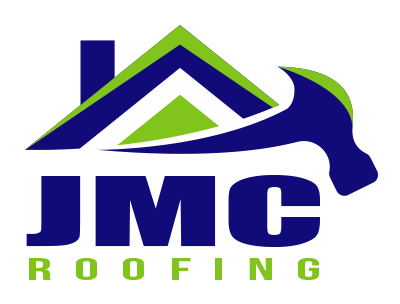
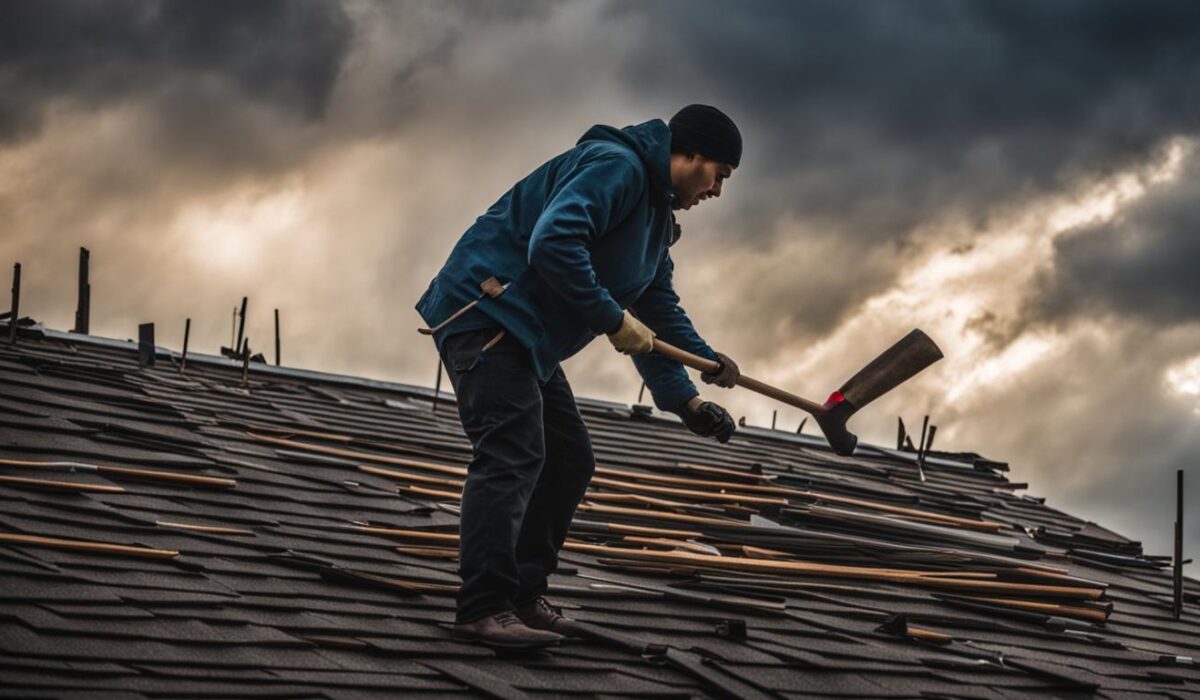
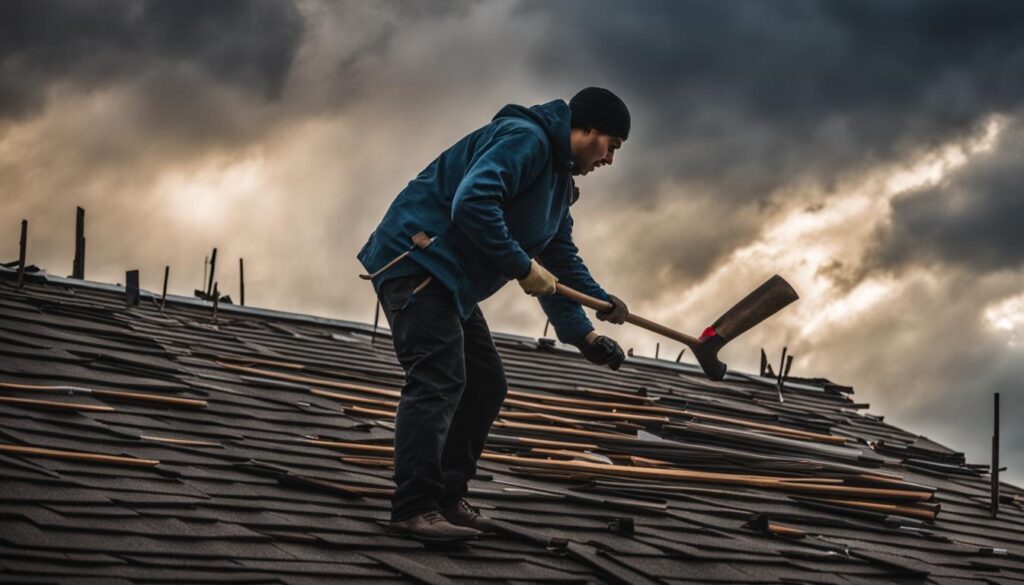
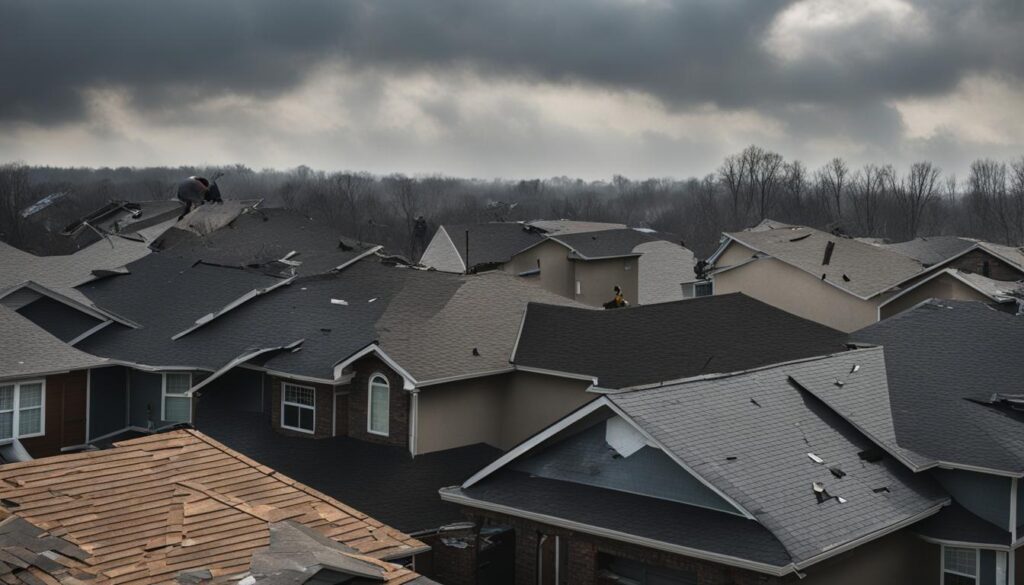
Comments are closed.